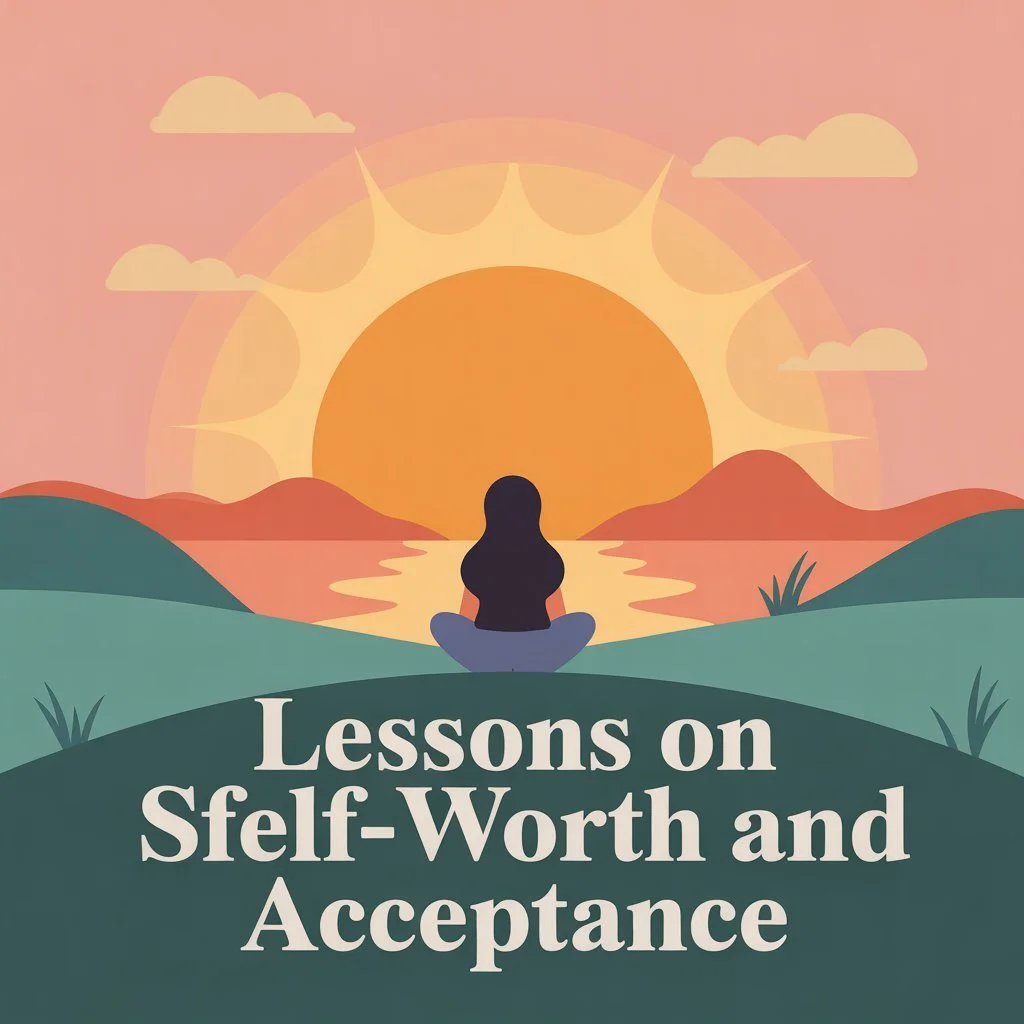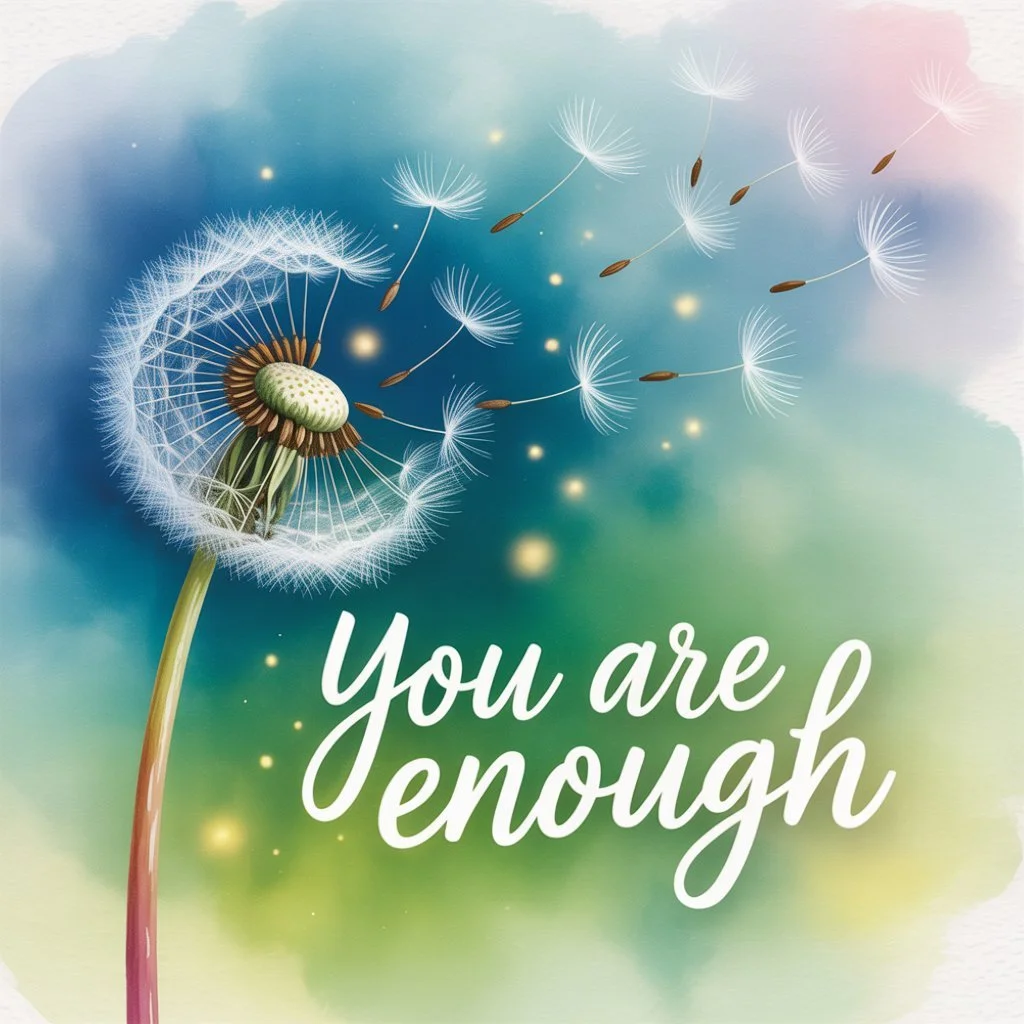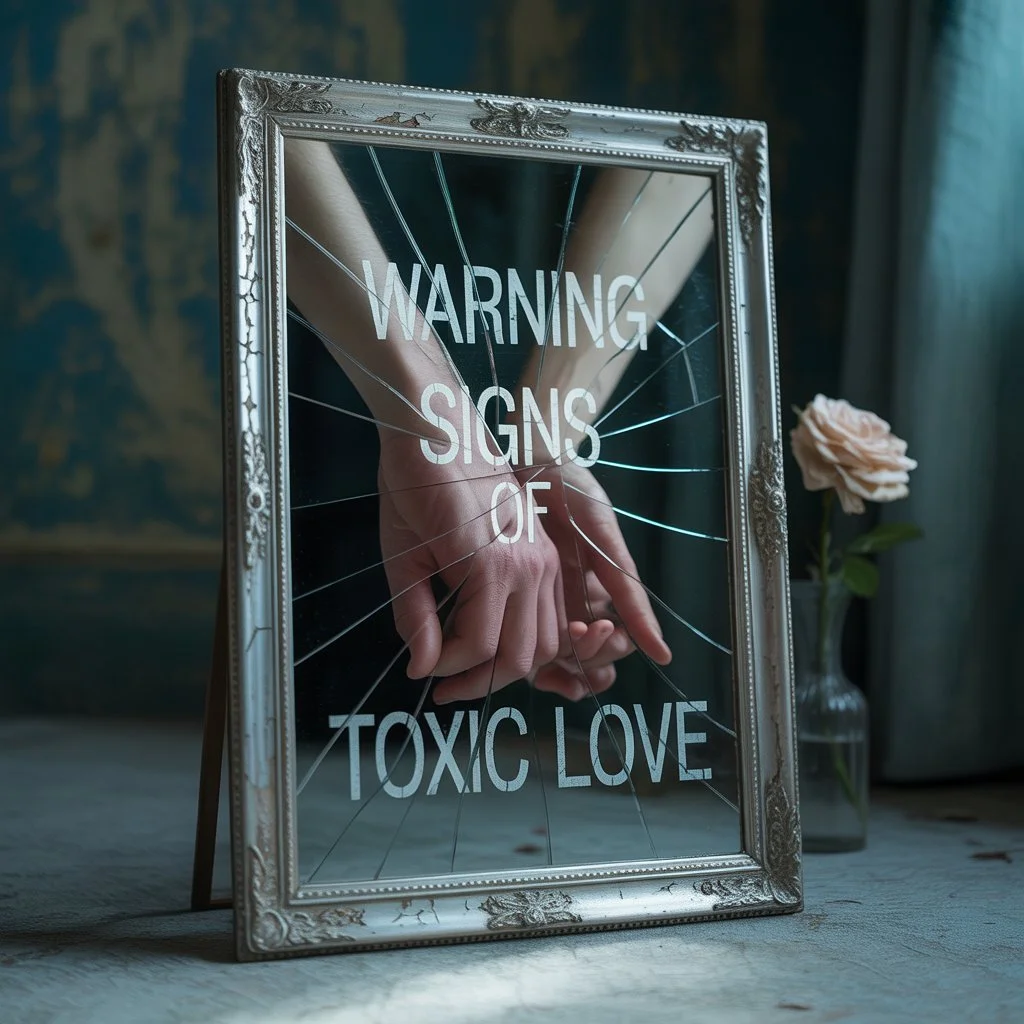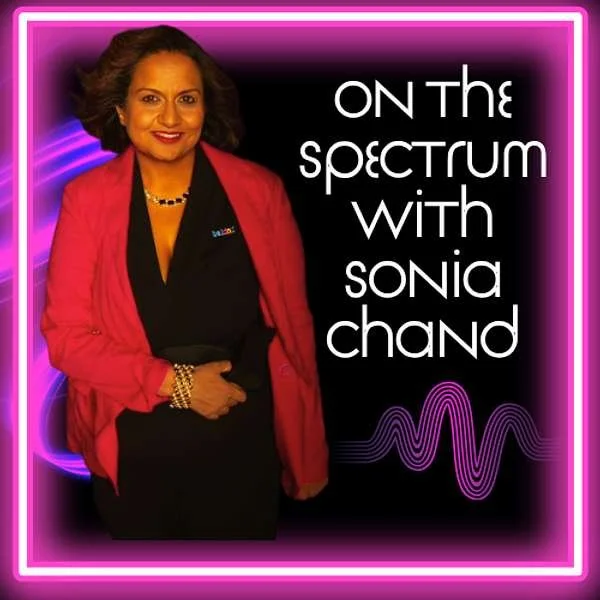Lessons on Self-Worth and Acceptance
Table of Contents
Intro
A Metaphor That Says It All: Pigs Are for Eating, Not for Dating
When Therapy Hurts Instead of Heals
How Low Self-Worth Shapes Relationships
Learning Social Norms Later in Life
Self-Advocacy as the Key to Acceptance
Breaking Free from Labels and Stereotypes
Conclusion
Lessons on Self-Worth and Acceptance
Many of us have been told, directly or indirectly, that our value depends on how we look, act, or fit into society’s mold. Those messages can sink deep, shaping how we see ourselves and how we let others treat us. Over time, they create silent rules about what we should look like, how we should behave, and what makes us “worthy.”
The weight of those expectations can lead to shame, toxic relationships, and years of trying to live up to someone else’s definition of success. But healing begins when we stop measuring ourselves against those standards and start redefining what worth really means.
This post explores powerful lessons on why self-advocacy matters, how stereotypes limit us, and how self-worth grows when we learn to set boundaries and embrace who we are.
A Metaphor That Says It All: Pigs Are for Eating, Not for Dating
Sonia shares a moment from her past that stayed with her for years. During therapy, instead of finding support, she was told that losing weight would solve her problems and even change her life. The phrase that stuck—“pigs are for eating, not for dating”—was delivered as if it were motivation. But for Sonia, it had the opposite effect. It reinforced the shame she already carried and fed a distorted belief that her value depended on her appearance.
At the time, those words cut deeply. They became part of the background noise in her mind, the kind of message that makes you second-guess your worth. Many people who have experienced toxic or misguided advice in therapy or relationships can relate to how lasting and damaging these moments can be.
The shift came later, when Sonia began to reclaim the phrase for herself. Instead of letting it define her, she reframed it as a metaphor for boundaries. To her, it became a reminder that not every judgment or harmful opinion deserves space in her life. Just because someone speaks something over you does not mean you have to accept it as truth.
The lesson here is powerful: words matter. They can wound, but they can also be reshaped into tools for growth. By taking back the words that once hurt her, Sonia showed that healing sometimes begins with reclaiming language and deciding which messages get to stay and which ones do not.
When Therapy Hurts Instead of Heals
Sonia sought therapy in law school during a period of intense stress. She expected a space to process fear, exhaustion, and the pressure to perform. Instead, her sessions with Dr. Grey centered on her appearance. Comments about weight, posture, and how she presented herself began to replace questions about her feelings and needs. The message she heard again and again was that life would improve if she changed how she looked.
This focus left her feeling smaller rather than stronger. Therapy became a mirror that reflected cultural judgment instead of compassion. Rather than exploring grief, anxiety, or identity, she was pushed toward image management. The result was shame, confusion about her true goals, and a growing belief that her worth lived on the surface of her body.
Why is this so harmful? Therapy has power because it is intimate and vulnerable. When that power is used to reinforce appearance standards or stereotypes, the client learns to monitor and correct the self instead of understanding the self. The session becomes a performance, not a place to heal. Over time, this can undermine self-trust, worsen body image, and discourage people from seeking help again.
There are clear signs that therapy is hurting rather than helping.
You leave sessions feeling judged or unsafe.
Your emotions are dismissed or quickly redirected to surface fixes.
The therapist talks more about how you look than how you feel.
Boundaries feel unclear, or the therapist imposes personal values.
Your goals are not discussed or are replaced by goals you did not choose.
By contrast, supportive therapy looks and feels different.
You are met with curiosity, not criticism.
The work focuses on your inner world, your history, and your values.
Goals are set together and reviewed openly.
The therapist practices cultural humility and respects neurodivergence and body diversity.
You leave feeling seen, even when sessions are emotionally challenging.
A key reflection from Sonia’s experience is that therapy can change lives when the relationship is safe and the method fits the person. It can also cause harm when it repeats the very messages that wounded you in the first place. Not every professional has the right tools for every client. Fit matters. Approach matters. Your sense of safety matters.
Self-advocacy includes knowing when to walk away. You are allowed to interview therapists, ask about their approach, and say no to what does not serve your healing. A simple process can help:
Name your goals in writing before or after a first session.
After each session, note how you feel in your body and whether you felt heard.
Ask direct questions in the next session, such as, “How will we work with anxiety and trauma without focusing on weight or appearance” or “What does success look like in this approach for someone like me”
If the fit is not right, end the relationship kindly and clearly.
You can use a short script: “Thank you for your time. I am looking for a different approach that aligns with my goals, so I will not be continuing.” That is enough. You do not owe a defense of your choice.
Sonia’s story is a reminder that the goal of therapy is not compliance with cultural norms. The goal is healing, clarity, and a stronger connection to your own worth. If you have experienced something similar, know that you are not alone and that a better fit exists. For deeper context on how she recognized these patterns and reclaimed her voice, listen to the full podcast episode, and explore her book for practical guidance on self-advocacy and self-acceptance.
How Low Self-Worth Shapes Relationships
Low self-esteem does not only affect how we see ourselves in the mirror. It silently shapes the way we enter and remain in relationships. When you believe deep down that you are not enough, you often accept less than you deserve. That can look like staying in one-sided friendships, tolerating disrespect, or holding onto people who take more than they give. Sonia shares openly that her lack of self-belief drew her toward toxic connections. Because she doubted her own value, she settled for relationships that confirmed her fears rather than challenged them.
In her case, friends who dismissed her feelings or crossed her boundaries were allowed to stay in her life. Instead of questioning their behavior, she questioned herself. Was she asking too much? Was she the problem? These internal doubts became a cycle, keeping her stuck in environments that drained her rather than uplifted her.
This pattern is common for anyone struggling with low self-worth. When the voice inside whispers “you are lucky just to have people around,” it becomes difficult to imagine walking away. Toxicity can start to feel normal. The fear of being alone often outweighs the hope of finding healthier connections.
The turning point for Sonia came when she began to rebuild her sense of self from the inside out. By naming her needs, practicing boundaries, and slowly learning to trust her voice, she saw that relationships should not feel like constant survival. Respect and care are not luxuries, they are the foundation of true connection.
Healing in this area is not just about cutting ties. Ending harmful relationships may be necessary, but the deeper work is learning to believe that you are worth more. Once that belief takes root, the choices you make about who belongs in your life naturally begin to shift. You start seeking spaces where your presence is celebrated, not tolerated. You find friends who listen, partners who respect, and communities that welcome you without conditions.
Learning Social Norms Later in Life
Many people pick up social norms almost naturally as they grow up—things like posture, table manners, or the unspoken rules of how to present yourself in different settings. But what happens when those lessons come later in life rather than early on Sonia shares openly that some of the skills others seemed to absorb effortlessly, she had to work hard to learn as an adult.
Simple things like how to hold utensils, how to sit with confidence, or how to adjust her presence in social spaces often felt foreign to her. While her peers appeared to “just know” these expectations, Sonia had to break them down piece by piece. For years, this created a sense of embarrassment and even isolation. She often felt like she was playing catch-up in a game where everyone else already knew the rules.
What makes her story powerful is not the delay but the reframing. Sonia eventually realized that learning something later in life is not the same as being incapable. It does not diminish intelligence, worth, or potential. It simply reflects a different timeline. Society often pressures people to master milestones at certain ages, but those timelines are arbitrary. True growth does not expire with age.
Her shift in perspective allowed her to move from shame to empowerment. Instead of viewing herself as “behind,” she began to celebrate the fact that she was still learning and improving. Every new skill was proof of resilience and determination, not failure.
Self-Advocacy as the Key to Acceptance
Self-advocacy is the cornerstone of Sonia’s story. At its core, her message is clear: no one can speak up for you better than you can. While support systems, mentors, or loved ones can encourage you, the real breakthrough comes when you learn to claim your own voice and stand firm in your worth.
For much of her life, Sonia wrestled with the weight of external judgments. Therapists, peers, and even cultural messages often told her who she should be, how she should look, or what she should change. At first, she internalized those voices, believing they held the power to define her value. But over time, she realized that waiting for others to hand her acceptance only kept her trapped in cycles of shame and disappointment.
True acceptance, she discovered, does not come from external validation. It begins with self-validation—choosing to recognize your own needs, setting boundaries, and refusing to let harmful labels dictate your identity. This shift did not happen overnight. It took courage, trial and error, and a willingness to face discomfort. Yet each time Sonia stood up for herself, she reclaimed a piece of her confidence.
Her journey illustrates a universal truth: self-advocacy is both the hardest and most rewarding step in healing. It requires confronting fear and pushing past the belief that you are undeserving of better treatment. But it also brings freedom. When you validate yourself first, you no longer live at the mercy of others’ opinions.
Breaking Free from Labels and Stereotypes
Labels have a way of sticking. Autism, weight, appearance—society often reduces people to these categories and assumes it knows their story. Sonia’s experience shows how damaging those assumptions can be. From an early age, she was surrounded by voices that tried to tell her who she was and what she could or could not do. The more those labels were repeated, the more they threatened to confine her.
But Sonia’s journey is proof that labels are not destiny. Instead of letting stereotypes dictate her future, she chose to challenge them. The very traits that others once used against her—her body size, her differences, her diagnosis—became sources of insight and resilience. By reclaiming her story, she turned what was once seen as weakness into evidence of her strength.
This part of her journey highlights something universal: real power comes from lived experience. It is not about fitting into society’s mold but about defining yourself on your own terms. Sonia reminds us that the stereotypes placed on people often reveal more about cultural bias than about the individuals themselves.
The takeaway is simple but powerful. When we listen to real voices instead of assumptions, we begin to dismantle myths. Stories like Sonia’s reshape how we view difference and challenge us to question the narrow boxes we put people in. By breaking free from labels, we not only create space for authentic self-expression but also encourage society to expand its definition of worth and success.
If you want to explore this transformation more deeply, Sonia shares raw stories and hard-won insights in her book. It is not just about her experiences, but about learning how anyone can move beyond the labels and write a new story for themselves.
Conclusion
At the heart of Sonia’s story is a powerful truth: our worth is not dictated by appearance, social status, or how easily we fit into the world’s expectations. True value comes from within, and it is something no one else can measure for us.
Her journey shows that healing begins when we draw boundaries, stop internalizing harmful labels, and start advocating for ourselves. Self-worth does not arrive overnight, but it grows stronger every time we choose to rewrite the old stories that once held us back.
If this message resonates with you, there are two ways to go deeper. First, listen to the full podcast episode to hear Sonia’s raw, unfiltered reflections. Her voice carries a depth that no summary can fully capture. Second, explore her book, where she expands on these lessons with practical tools and hard-earned wisdom for anyone ready to embrace self-acceptance.
How to Escape Toxic Love
Table of Contents
Intro
What Is Toxic Love?
Lindsay Abernathy’s Story — Escaping Toxic Love
Warning Signs of Toxic Love
Why Leaving Is So Hard — and Dangerous
Recovery and Rebuilding Self-Worth
Why You Should Listen to Sonia Chand’s Podcast
Conclusion
How to Escape Toxic Love
Toxic love is something many people experience but few talk about openly. On the surface, it can look like the perfect relationship — filled with affection, attention, and promises of forever. But behind closed doors, it often hides manipulation, control, and emotional pain. Sadly, so many suffer in silence, unsure of how to name what they are going through or how to escape.
In this blogpost, we will explore some of the most powerful lessons from Lindsay’s story, how to recognize the warning signs of toxic love, why it can be so hard to leave, and what steps can help in healing and recovery. Whether you’ve experienced a toxic relationship yourself or know someone who has, these insights will offer both encouragement and practical guidance.
And if you want the full, unfiltered story in Lindsay’s own voice, I encourage you to listen to the complete podcast episode. It’s raw, eye-opening, and deeply empowering, exactly the kind of conversation that can spark change for those who need it most.
What Is Toxic Love?
Toxic love is a relationship that feels like love on the outside but takes more from you than it gives. Instead of lifting you up, it slowly pulls you down. At first, it may feel exciting, even overwhelming, with grand gestures of affection and promises of forever. But over time, toxic love reveals itself through manipulation, control, and emotional harm. It drains rather than supports, leaving the person involved feeling smaller, weaker, and less sure of themselves.
This is very different from healthy love. In a healthy relationship, there is mutual respect, safety, and room for growth. You can be yourself without fear of judgment. You feel supported in your goals and encouraged to shine in your own way. Love should add to your life, not shrink it. Healthy love makes space for both people to thrive, while toxic love makes one person powerful at the expense of the other.
One of the most painful truths is that many people don’t realize they are in a toxic relationship until it is too late. At the beginning, toxic love often feels magical. The affection and attention can be so intense that it is easy to mistake it for genuine care. This early stage is sometimes called “love bombing” — overwhelming someone with affection, gifts, or constant contact to quickly build trust. By the time the manipulation and criticism start to show, the victim is already deeply tied to the relationship, making it harder to step back and see it clearly.
That is why conversations like the one between Sonia Chand and Lindsay Abernathy are so important. They shine a light on what toxic love really looks like, so others can recognize it earlier and know they are not alone.
Lindsay Abernathy’s Story — Escaping Toxic Love
In Sonia’s podcast episode, Lindsay Abernathy bravely shares her own experience of escaping toxic love. On the outside, her relationship appeared picture-perfect. From the perspective of friends, family, or even social media, it looked like the kind of love many people dream about. But inside her private world, Lindsay was living a very different reality, one filled with control, emotional harm, and fear.
This is one of the most striking parts of toxic relationships: they often hide behind a mask of perfection. The world sees a smiling couple, happy photos, and romantic gestures, while the person inside the relationship is suffering in silence. For Lindsay, that contrast between appearance and reality was part of what made her story so powerful.
She explains the cycle many victims experience: first the overwhelming affection, then the subtle criticisms, and finally the controlling behavior. What begins as love bombing shifts into a pattern where the victim is slowly made to feel smaller, more dependent, and less capable of leaving. This cycle is one of the hardest parts to break, because each time the victim tries to pull away, the abuser often returns to the “love bombing” stage, creating confusion and guilt.
Leaving a toxic relationship is never simple. Lindsay talks about the emotional trauma, financial control, and dependency that kept her trapped for so long. Many victims face similar barriers — from fear of what might happen if they try to leave, to not having the resources or support to stand on their own. This is why escaping is not just an act of leaving; it is a process of rebuilding safety, strength, and identity.
To truly understand the weight of Lindsay’s journey and the courage it took to reclaim her life, you need to hear her voice directly. In Sonia’s On the Spectrum Empowerment Stories podcast, Lindsay shares her experience with raw honesty that cannot be captured fully in writing. Her words are powerful, her story is eye-opening, and her message is one of hope and empowerment.
👉 Listen to the full episode here
Warning Signs of Toxic Love
Toxic love rarely reveals itself right away. At the start, everything may feel perfect — too perfect. That is why so many people miss the early red flags. Understanding these warning signs can help you or someone you love recognize when a relationship is crossing the line from healthy to harmful.
Extreme flattery at the start (love bombing)
In the beginning, toxic partners often shower their partner with praise, gifts, or constant attention. It can feel overwhelming, even addictive. This stage, known as “love bombing,” creates a powerful attachment and makes it harder for the victim to question the relationship later.
Subtle put-downs that erode self-esteem
Once trust has been secured, the tone often shifts. The same partner who once praised every move may begin to slip in small criticisms: about how you look, how you speak, or how you spend your time. These comments may seem harmless at first, but over time they chip away at confidence and self-worth.
Slow control tactics — isolating from friends and family
Another common tactic is slowly creating distance between the victim and their support system. At first, it may sound like care: “Why don’t we just stay home together?” or “I don’t think your friend really likes you.” But little by little, the victim becomes isolated, with fewer people to lean on or turn to for perspective.
Financial manipulation — restricting access to money
Lindsay also highlights how toxic partners can use money as a form of control. Sometimes they insist on managing all finances, or they limit access to bank accounts, making it difficult for the victim to be independent. Financial control is one of the strongest barriers to leaving, because without resources, many victims feel trapped.
During her conversation with Sonia, Lindsay explained how these patterns can creep in so slowly that you barely notice what is happening until you feel completely stuck. She said something powerful: “It didn’t start with control. It started with charm. By the time I realized how much I had lost, I was already too afraid to leave.”
👉 Lindsay explains these patterns in such an eye-opening way on Sonia’s podcast. Listen here
Why Leaving Is So Hard — and Dangerous
From the outside, people often ask: “Why didn’t they just leave?” But for anyone who has lived through toxic love, the truth is far more complicated. Leaving is not only emotionally difficult — it can also be dangerous. Understanding these barriers helps us show more compassion toward survivors and support them better.
Psychological effects
Toxic relationships create deep trauma bonds. The cycle of love bombing, criticism, and brief moments of affection keeps victims tied emotionally, even when they know they are being hurt. Trauma rewires the brain to prioritize survival over logic, which makes planning an escape feel overwhelming. Victims may doubt themselves, blame themselves, or even believe they cannot survive outside the relationship.
Practical barriers
Many survivors face very real, practical challenges. Financial dependence is one of the biggest obstacles. If the toxic partner controls money, bank accounts, or employment, the victim may feel they have no means to support themselves or their children. Others worry about where they will live, how they will feed their families, or whether anyone will believe them if they speak out.
The risk of retaliation
One of the most heartbreaking truths is that the most dangerous time in an abusive or toxic relationship is when the victim decides to leave. This is when the controlling partner feels their power slipping and may lash out in anger or desperation. For many survivors, the fear of retaliation is paralyzing — and it is a very real risk.
The importance of a safety plan
That is why leaving requires more than courage; it requires strategy. Survivors are encouraged to develop a safety plan that includes documenting abuse (keeping records or messages), identifying a safe exit strategy, and building a support network of trusted friends, family, or professional advocates. Having these protections in place can make all the difference between escaping safely and being pulled back into danger.
As Lindsay shared with Sonia, even knowing she had to leave, she felt torn between fear and survival. Her story shows that leaving isn’t a single step — it is a process, one that requires planning, courage, and the right support system.
To hear Lindsay explain this powerful and emotional part of her journey, listen to the full episode here
Recovery and Rebuilding Self-Worth
Healing after toxic love is not only possible — it is powerful. Many survivors come out of toxic relationships feeling broken, questioning their identity, or wondering if they will ever trust again. But the truth is that recovery is real, and rebuilding self-worth is the most important part of the journey.
Healing takes time
Leaving a toxic relationship is just the beginning. Survivors often carry invisible wounds: self-doubt, fear, and anxiety. Healing means giving yourself permission to rest, reflect, and grow at your own pace. Therapy, support groups, journaling, or even simply talking with trusted friends can create space for recovery.
Boundaries are essential
For those who share children with a toxic partner, boundaries become a lifeline. Co-parenting in such situations is not easy, but clear limits can protect your mental health and provide stability for your children. This may look like communicating only through written messages, keeping interactions brief and focused on the children, or involving a mediator if necessary. Boundaries are not walls to keep people out, they are fences that keep your peace intact.
Rebuilding self-worth
One of the most damaging effects of toxic love is how it convinces victims they are not enough. But here’s the truth: your self-worth cannot be stolen — it can only be buried, and it can always be rebuilt. Every step you take toward healing is proof of your strength. Surround yourself with affirmations, celebrate small victories, and remind yourself that you deserve love that uplifts rather than destroys.
Reclaiming your story
The heart of Sonia Chand’s On the Spectrum Empowerment Stories podcast is about taking back power from the pain. Lindsay’s story is not just about survival; it’s about reclaiming her identity, her voice, and her future. Her courage reminds us that no matter how much has been lost, life after toxic love can be filled with hope, resilience, and joy.
If you or someone you know is rebuilding after toxic love, Lindsay’s journey will inspire you. Listen to the full conversation on Sonia’s podcast here.
Why You Should Listen to Sonia Chand’s Podcast
When it comes to topics like toxic love, reading about it is helpful but hearing real voices and real stories makes the impact even stronger. Sonia Chand’s On the Spectrum Empowerment Stories podcast does exactly that.
Breaking stigma and isolation
Many people suffering in toxic relationships feel alone, ashamed, or afraid to speak up. Hearing Lindsay’s story reminds listeners that they are not alone. Toxic love can happen to anyone, regardless of background, and there is no shame in acknowledging it. Sharing these stories helps to break the silence and remove the stigma that keeps people trapped.
Practical lessons and emotional support
This podcast is not just storytelling, it’s education and encouragement woven together. In her conversation with Sonia, Lindsay sheds light on red flags, survival tips, and what life looks like after breaking free. Listeners walk away with knowledge they can use, whether to help themselves or to support someone they love. More importantly, they feel supported emotionally, hearing from someone who has walked the same path and found a way forward.
Share the message
If this story resonates with you, don’t keep it to yourself. Share the episode with a friend, family member, or colleague who may need it. Sometimes, just hearing someone else’s story is the spark of courage someone needs to take their first step toward healing.
Conclusion
Toxic love can happen to anyone. It doesn’t matter how strong, educated, or independent you are, manipulation and control can sneak into any relationship. But as Lindsay Abernathy’s story shows, healing and freedom are possible. Escaping toxic love is not only about leaving a harmful relationship; it’s about reclaiming your power, your freedom, and your identity.
If you or someone you care about is in a toxic relationship, this episode could be the first step toward change. Sonia Chand’s On the Spectrum Empowerment Stories podcast is here to remind you that you are not alone, that your self-worth can be rebuilt, and that your story matters.
Listen now to Lindsay’s full story on Sonia Chand’s podcast and begin your journey toward healing








